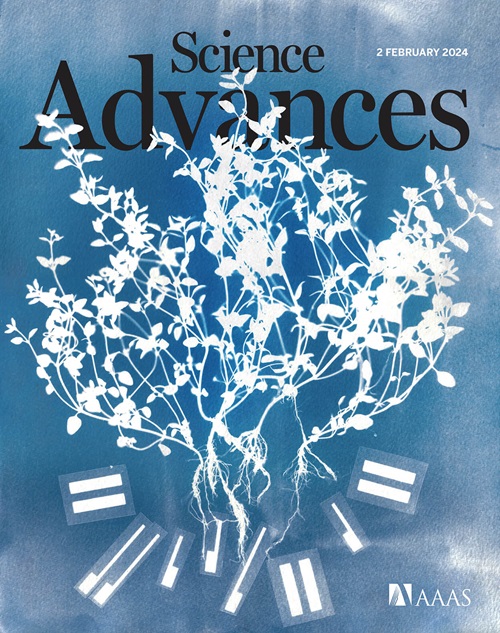Excess surface area of the nuclear lamina enables unhindered cell migration through constrictions
IF 11.7
1区 综合性期刊
Q1 MULTIDISCIPLINARY SCIENCES
引用次数: 0
Abstract
Cell migration through narrow spaces is essential in wound healing and metastatic spread of cancer. Cells must deform the large nucleus to fit through constricting channels. To understand the role of the nuclear lamina in limiting cell migration through constrictions, we imaged it in cells migrating through periodic constricting channels in a microdevice. The lamina underwent cycles of wrinkling and smoothing as the nucleus changed from an irregular, rounded shape in the wide channel regions between constrictions to a smooth, hourglass shape as the nucleus passed through the center of a constriction. The laminar surface area of nuclei within constrictions was measured to be at or above the computationally predicted threshold area for the nuclear volume. The channels excluded control nuclei that had insufficient excess surface area, but not nuclei lacking lamin A/C. Thus, the excess surface area of the nuclear lamina enables cell migration through constricting channels.

求助全文
约1分钟内获得全文
求助全文
来源期刊

Science Advances
综合性期刊-综合性期刊
CiteScore
21.40
自引率
1.50%
发文量
1937
审稿时长
29 weeks
期刊介绍:
Science Advances, an open-access journal by AAAS, publishes impactful research in diverse scientific areas. It aims for fair, fast, and expert peer review, providing freely accessible research to readers. Led by distinguished scientists, the journal supports AAAS's mission by extending Science magazine's capacity to identify and promote significant advances. Evolving digital publishing technologies play a crucial role in advancing AAAS's global mission for science communication and benefitting humankind.
 求助内容:
求助内容: 应助结果提醒方式:
应助结果提醒方式:


